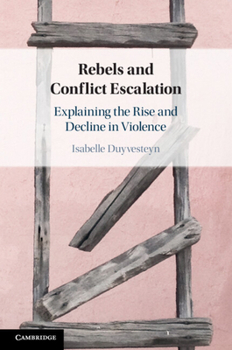Rebels and Conflict Escalation
Select Format
Select Condition 
Book Overview
Violence during war often involves upswings and downturns that have, to date, been insufficiently explained. Why does violence at a particular point in time increase in intensity and why do actors in war decrease the level of violence at other points? Duyvesteyn discusses the potential explanatory variables for escalation and de-escalation in conflicts involving states and non-state actors, such as terrorists and insurgents. Using theoretical arguments and examples from modern history, this book presents the most notable causal mechanisms or shifts in the shape of propositions that could explain the rise and decline of non-state actor violence after the start and before the termination of conflict. This study critically reflects on the conceptualisation of escalation as linear, rational and wilful, and instead presents an image of rebel escalation as accidental, messy and within a very limited range of control.
Format:Paperback
Language:English
ISBN:1009009257
ISBN13:9781009009256
Release Date:March 2024
Publisher:Cambridge University Press
Length:284 Pages
Weight:0.85 lbs.
Dimensions:0.6" x 6.0" x 9.0"
Customer Reviews
0 rating





